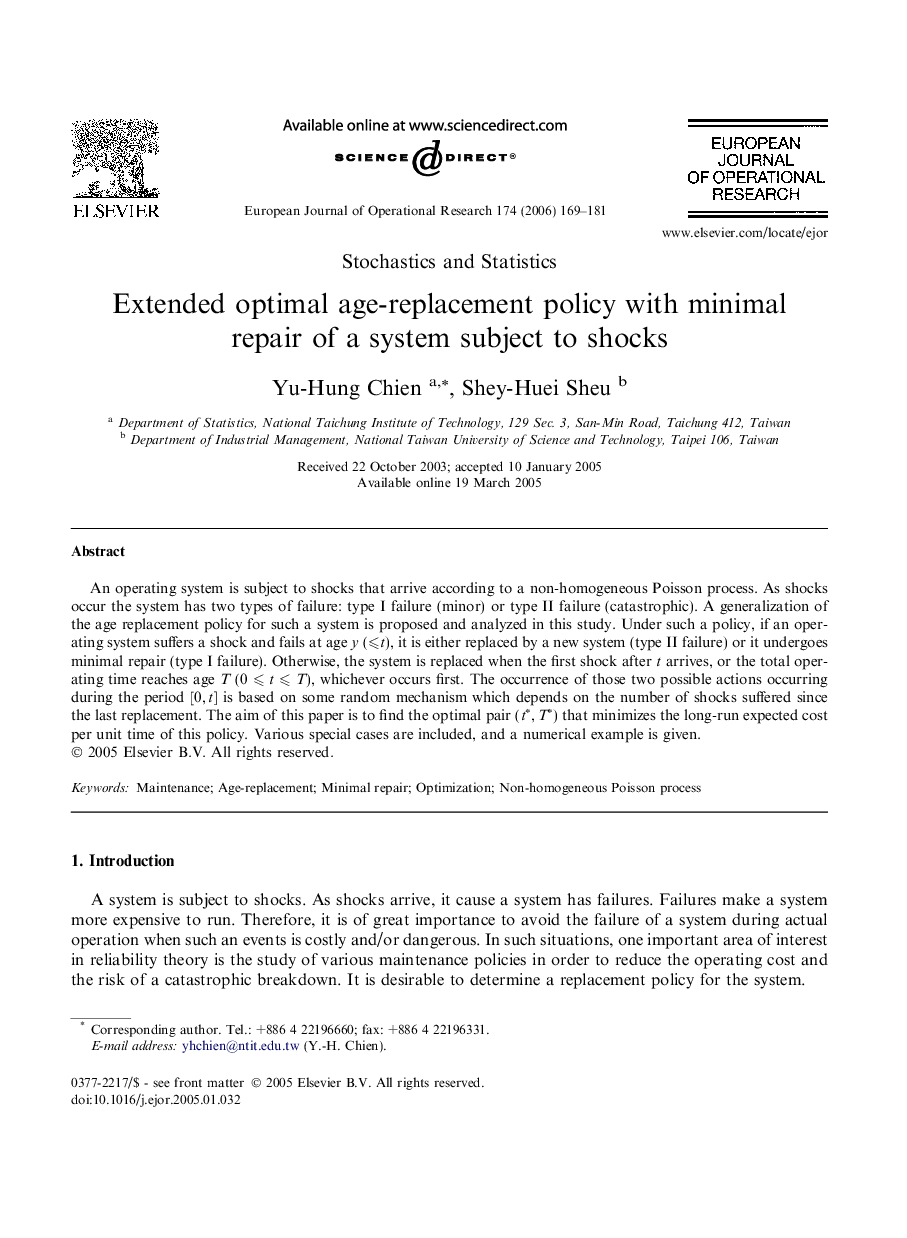| Article ID | Journal | Published Year | Pages | File Type |
|---|---|---|---|---|
| 477872 | European Journal of Operational Research | 2006 | 13 Pages |
An operating system is subject to shocks that arrive according to a non-homogeneous Poisson process. As shocks occur the system has two types of failure: type I failure (minor) or type II failure (catastrophic). A generalization of the age replacement policy for such a system is proposed and analyzed in this study. Under such a policy, if an operating system suffers a shock and fails at age y (⩽t), it is either replaced by a new system (type II failure) or it undergoes minimal repair (type I failure). Otherwise, the system is replaced when the first shock after t arrives, or the total operating time reaches age T (0 ⩽ t ⩽ T), whichever occurs first. The occurrence of those two possible actions occurring during the period [0, t] is based on some random mechanism which depends on the number of shocks suffered since the last replacement. The aim of this paper is to find the optimal pair (t∗, T∗) that minimizes the long-run expected cost per unit time of this policy. Various special cases are included, and a numerical example is given.
